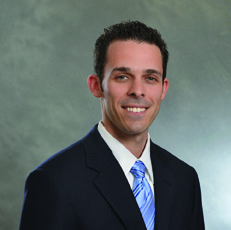 |
 |
 |
Health care: New reality, new risks In designing coverage, ACE takes a comprehensive look at changing exposures By Dave Willis
The health care industry today is facing heightened scrutiny. Legislative and regulatory actions designed to combat misconduct have brought about a dramatic increase in liability for health care organizations. A whitepaper produced by ACE Insurance, in conjunction with outside counsel, explores key issues these organizations face and points out the importance of a proactive risk management strategy that includes a properly structured management liability insurance program. The report, The Rising Tide of Risk for the Health Care Industry, is the first in a series and focuses largely on three topics: The United States False Claims Act, antitrust activity related to mergers and acquisitions, and liability resulting from peer review and credentialing. False Claims Act The False Claims Act (FCA) is the government's primary tool for combating waste, fraud and abuse by government contractors, including health care providers participating in federal health care programs. The ACE report points out that the act contains "qui tam"/whistleblower provisions that let private parties—referred to as relators—file suits seeking recovery under the act on behalf of the United States. Relators file qui tam actions under seal to let the United States investigate the allegations. After the investigation, the government decides whether to intervene in the case and litigate it in court. Scott Williams, assistant vice president, ACE USA Professional Risk, points out that the act has been around for quite a long time. "It originated in England, which is where the term 'qui tam' comes from," he explains. "In the United States, it sometimes is referred to as Lincoln's Law. He signed it during the Civil War. Its intent then was to make sure goods and products the military bought were sold at a fair price and would be delivered." The act has expanded significantly since then. Over the last few years, health care—specifically overbilling for medical services—has been a key focus. In 2012, roughly $5 billion was recovered under the act, according to the Office of Inspector General (OIG), which works in conjunction with the Department of Justice to investigate and prosecute these matters. More than $3 billion of that was in health care. "A recent OIG mid-year report to Congress estimates that in 2014, almost $4 billion will be collected from providers of health care services," Williams explains. Health care organizations need to understand the act and its potential impact. As the report explains, the act "imposes liability on anyone who knowingly submits or causes the submission of a false or fraudulent claim to the United States for payment. Damages and penalties under the FCA can be significant, as the FCA provides for the possibility of treble (3x) damages and per-claim penalties of between $5,500 and $11,000." Williams explains, "In the broader sense, the act goes after fraud and abuse. When you really dig down, though, we're dealing with billing mistakes or coding errors. Perhaps there was an emergency and a doctor performed a certain procedure, but, in hindsight—and in the eyes of someone analyzing the case—perhaps something else should have been done instead. So it's not necessarily fraud and abuse." Williams points out that to crack down on overbilling, Congress and the Centers for Medicare & Medicaid Services (CMS) created various auditing boards, including Recovery Audit Contractors and Zone Program Integrity Contractors. "These individuals comb through medical records, looking for anomalies," he says. "While CMS limits the number of medical records auditors can request, these caps reset every 45 days." Complying with the audit process can be costly for health care organizations, whether or not issues are found. ACE recently introduced a new product to address the impact of the FCA and other issues affecting health care organizations. "When we were putting the product together, we wanted to dig into the exposures," Williams explains. "We sat down with outside counsel that has spent time prosecuting and defending these matters. We really wanted to understand the process." The team took that knowledge and created a form, he says, "from the ground up. With a better understanding of the issues, we put the policy together in a clear and concise manner that explains to insureds what they're getting and what they're not." As part of the development process, ACE expanded its product to specifically include defense cost coverage for audits. "It's a trend we don't see going away," he adds. "Outside counsel doesn't see it going away. In fact, the health care organizations don't see it going away."
Antitrust laws The report notes that health care entities face an increased risk that their activities will run afoul of the federal antitrust laws. "Over the past several years, federal and state enforcement agencies, along with the private bar, have significantly ramped up their efforts to police anticompetitive conduct," it says. "While price-fixing, agreements to allocate markets and monopolization remain staples of antitrust litigation, we have entered a new age of antitrust liability for health care providers." Health care market participants shouldn't expect antitrust enforcement efforts to let up, the report adds. "Market forces that are driving the tidal wave of consolidation and the struggle for shifting and shrinking reimbursement dollars will be present for the foreseeable future," it says. Actions can be brought for anything that unreasonably restrains competition. "A lot of these laws have a civil component and a criminal component," Williams explains. "A lot of antitrust lawsuits are on the civil side. The Federal Trade Commission may come in during the early stage of a potential acquisition—one health care provider buying another or perhaps a physicians practice group." Competitors also may bring actions. "If they believe an acquisition or merger will put them at a competitive disadvantage, they can try and challenge it," Williams explains. Williams points out that mergers and acquisitions are more commonplace these days. "A couple of years ago, when the Patient Protection and Affordable Care Act was passed, many health care organizations realized they needed to make sure they could provide the full gamut of services to their patients," he explains. "They wanted to make sure they were ready for an influx of new patients." So they teamed up with neighboring or distant competitors or bought local physician practices to bolster their capacity. "Most health care executives still are looking at making acquisitions," Williams notes. "Whether or not they make one is another story, but they're looking to see what makes the most sense for their organizations. Next year, once the act is fully in place, it will be interesting to see what happens—whether they continue the M&A trend or whether they back off and let things settle in." Credentialing and peer review The third area of liability involves disputes between hospitals and physicians over credentialing and peer review matters. "Peer review and credentialing have been around for a long time," Williams explains. "Years ago, when towns had a single, small, not-for-profit hospital, there was some form of charitable immunity. Over the years, health care systems have grown and the organizations have become more complex, leading to the repeal of many charitable immunity statutes." This places a greater burden on these organizations. "They have an increased duty to investigate, select and retain qualified and competent doctors to serve their patients," Williams notes. "As their immunity went away, patients started challenging those decisions—alleging various types of institutional negligence. "This led to hospitals setting up official credentialing committees to thoroughly review specific doctors' applications," he adds. "These committees might have to recommend to the hospital board whether to hire a specific doctor and what type of privileges to extend to the doctor. It's a complex procedure that hospitals take very seriously." If a committee decides that a specific doctor is not the right fit, they face a possible suit. "The doctor could allege any of a number of things," Williams explains. "He could say the institution failed to follow its by laws in the review process or didn't allow for adequate appeal. He could say it interfered with his ability to sell his services and make a living." The report points out that these situations are typically emotionally charged and involve high stakes. "You're dealing with a doctor who is very highly compensated, so they stand to lose a significant amount of money," Williams notes. "Plus, they can afford to hire great attorneys to challenge the decision-making process or outcome." He adds, "Allegations are endless and they typically pull in the board and the credentialing committee. Suits like these take away from the board's ability to do what it's trying to do: manage the hospital." The report puts it this way: "Win, lose or draw: significant costs and legal fees can be incurred in addition to the risk of liability." Agent and broker role Williams says that hospitals need to know their exposures and how to better protect themselves. "It's important for them to understand how important a comprehensive insurance program really is," he explains. Many of the exposures—the False Claims Act, the antitrust and credentialing—can, at least in part, be addressed through insurance. Agents and brokers need to address these issues and, if the organization didn't have adequate coverage before, make sure they do going forward. It's most important for agents and brokers to understand that they're not dealing with a commodity," Williams explains. "These are very complex insureds with very complex exposures." He stresses the value of sitting down with clients and understanding their unique exposures. "Know what services they're providing, the areas in which they operate, and really dig in to the policy language to determine whether their exposures are addressed," he notes. "As an insurance provider, we get involved in these claims," Williams adds. "We see the importance of having a strong risk management strategy to address the issues. It's important to have everyone involved—the agent or broker, the carrier, in-house counsel, outside counsel, risk managers—to build that comprehensive program and overall strong risk management strategy." Self audits can be part of the approach. A good insurance program is another. Working with qualified professionals also is important, Williams notes. "Hospitals need to make sure outside counsel they hire has significant expertise in the health care industry and significant experience working with various regulatory bodies involved in these matters. Being able to work through the issues efficiently can save a lot of time, effort and money for the board and its staff." Anything that can be addressed up front and not in the middle of a dispute has a better outcome, Williams says. "Also, it's important to protect the entity and the individuals," he adds. "At the end of the day, the trustees or board members are exposed. They don't want to have to dig into their own pockets, so there needs to be adequate protection for them, as well." Williams encourages agents and brokers to tap the carrier for help. "We view our relationships as long-term," he says. "We encourage face-to-face meetings with brokers and insureds because we all get a lot out of them. The organization learns about its risks, and we and the broker learn a lot about the organization and its policies and procedures. And we can assess management's dedication to delivering a better product, documenting files adequately, and ensuring accurate and timely billing practices." The report concludes, "The challenges faced—from relators looking for the next million dollar pay day to high stakes disputes between competing hospitals—can be met by a proactive risk management strategy that includes a properly structured management liability insurance program. Failure to do so could expose health care organizations to significant risk." Dedicated agents and brokers can help clients reduce these exposures.
|
|||||
| |||||
| ©The Rough Notes Company. No part of this publication may be reproduced, translated, stored in a database or retrieval system, or transmitted in any form by electronic, mechanical, photocopying, recording, or by other means, except as expressly permitted by the publisher. For permission contact Samuel W. Berman. |

